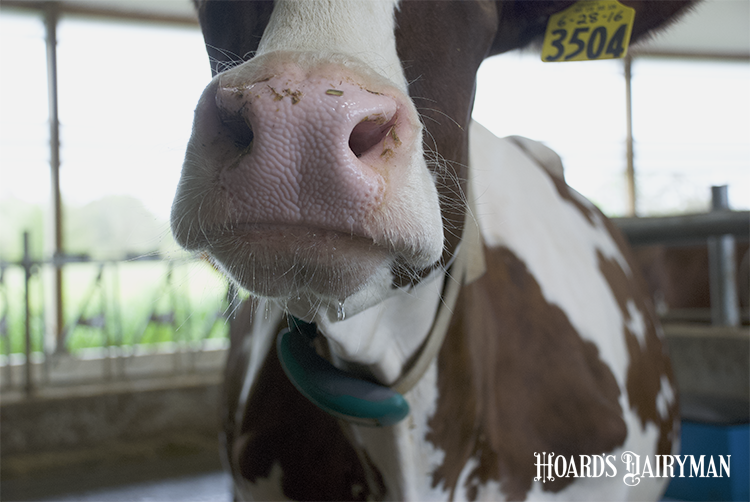
It is not always easy to give up control and delegate tasks. Putting our trust in someone else to get the job done can come with reservations that they will not do it correctly or to our standards. It might be especially difficult to put our trust in something else — such as a piece of technology.
Keeping animals healthy is the most important job on a dairy farm, so it is reasonable that the decision to move to an automated health monitoring system is not taken lightly. There are several questions you should ask, including how does it actually measure a change in the animal, do those changes matter, and how does herd health change?
In a Cornell University Technology Tuesday webinar, Julio Giordano addressed those questions and more for farmers who may be considering how to integrate these time- and labor-saving devices in their herd. Whether you are using a wearable technology or something in the cow’s environment, these products do well at detecting biological changes that indicate disease, he noted.
One study his team did resulted in 93% of cows with a displaced abomasum, metritis, or indigestion being detected with rumination and activity monitors. In a more recent experiment, 84% of cows were identified with an alert within seven days of clinical diagnoses, and usually before.
Automated health monitors are also a good indicator of severity of disease. “Less severe cases will present a more moderate change in parameter,” the associate professor said. More dramatic alerts may also indicate that a cow is dealing with multiple health challenges, he added.
Giordano also explained a randomized trial they did where cows were either evaluated by clinical exam or automated monitor. The examined cows were evaluated every day for the first 10 days in milk (DIM) by clinical exam in addition to milk weights and visual observation, then only milk weights and visual observation were used until 21 DIM. The other group of cows used automated monitoring for health score and milk weights (in addition to visual observation as a safety net) to identify disease.
In the end, the monitors identified the same number of cows, or slightly fewer, as needing attention. The cows that really needed it were receiving care, Giordano said. Between the two groups, there was no difference in the share of cows sold or dying up to 60 DIM, milk yield in the first 150 DIM, or reproductive performance. Some visual observation is still needed, but the system did its job, Giordano stated.
This information can help you decide how you may want to incorporate automated monitors into your herd. Giordano explained three options farms have adopted:
- Use automated alerts as an aid to other forms of identifying disease, such as milk weights or observation. Here, the alerts don’t dictate which cows to evaluate, but they add more information. This won’t reduce the number of cows to look at, but it may improve accuracy.
- Generate evaluation lists solely on automated alerts. “The point is we can go from a much longer list of cows to a much shorter list,” he said. Depending on the system, you may miss some cows that could benefit from attention.
- Use a combination of alerts and observation. Giordano advised focusing on alerts early in lactation. Still, the use of observation recognizes that the monitors may not catch everything.
Which system you adopt depends on your level of trust in the system, Giordano recognized. It may also depend on available labor or facilities. Altering one of the essential jobs on a dairy can be an adjustment, but in the case of automated health monitors, it may help you use those valuable assets more efficiently.








